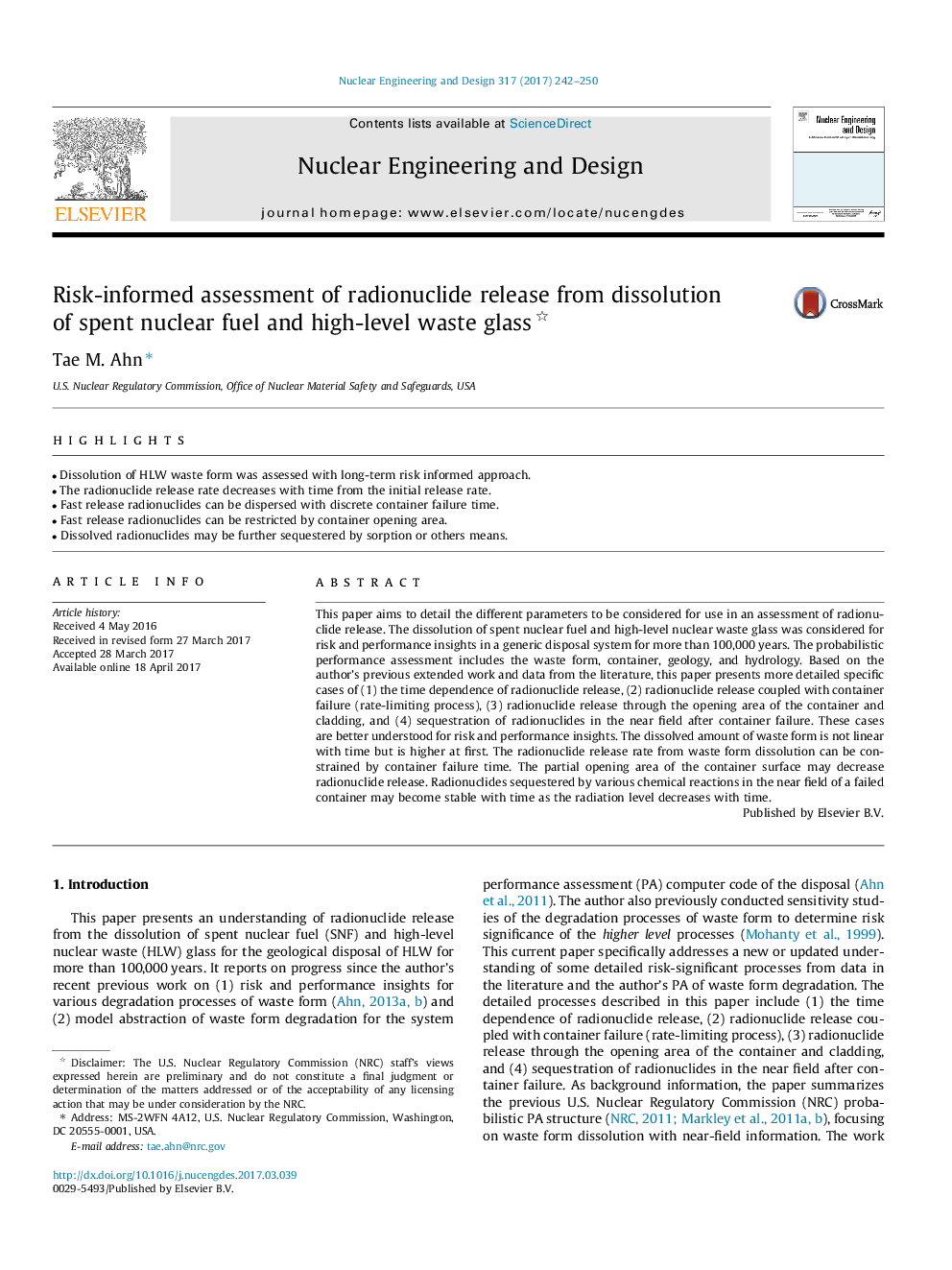| Article ID | Journal | Published Year | Pages | File Type |
|---|---|---|---|---|
| 4925608 | Nuclear Engineering and Design | 2017 | 9 Pages |
Abstract
This paper aims to detail the different parameters to be considered for use in an assessment of radionuclide release. The dissolution of spent nuclear fuel and high-level nuclear waste glass was considered for risk and performance insights in a generic disposal system for more than 100,000Â years. The probabilistic performance assessment includes the waste form, container, geology, and hydrology. Based on the author's previous extended work and data from the literature, this paper presents more detailed specific cases of (1) the time dependence of radionuclide release, (2) radionuclide release coupled with container failure (rate-limiting process), (3) radionuclide release through the opening area of the container and cladding, and (4) sequestration of radionuclides in the near field after container failure. These cases are better understood for risk and performance insights. The dissolved amount of waste form is not linear with time but is higher at first. The radionuclide release rate from waste form dissolution can be constrained by container failure time. The partial opening area of the container surface may decrease radionuclide release. Radionuclides sequestered by various chemical reactions in the near field of a failed container may become stable with time as the radiation level decreases with time.
Related Topics
Physical Sciences and Engineering
Energy
Energy Engineering and Power Technology
Authors
Tae M. Ahn,
